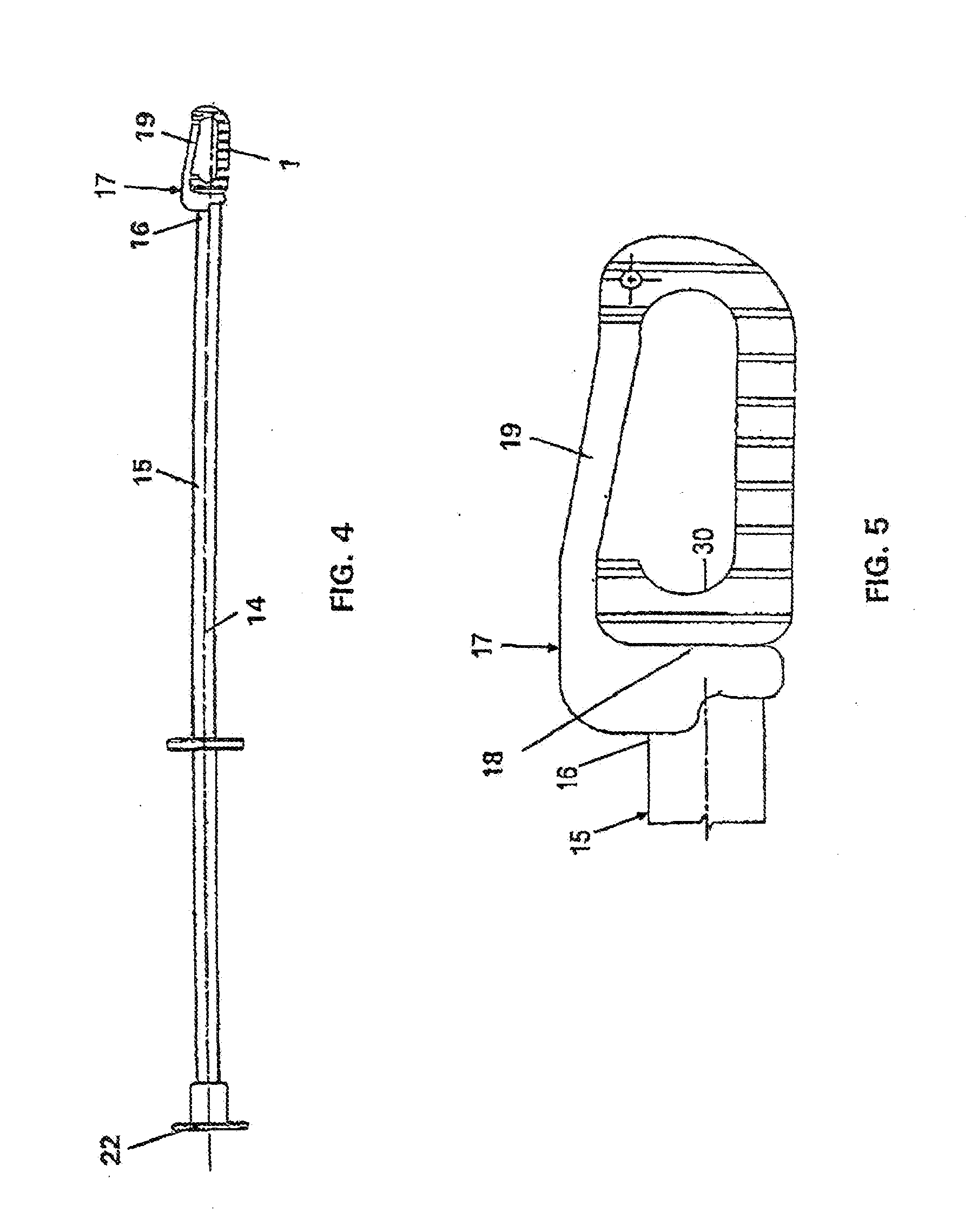Intersomatic cage with unified grafts
a technology of intersomatic cage and graft, which is applied in the field of intervertebral cage, can solve problems such as complicated cages, and achieve the effects of increasing air gap, avoiding endangering stability and strength, and being more resistant to tension forces
- Summary
- Abstract
- Description
- Claims
- Application Information
AI Technical Summary
Benefits of technology
Problems solved by technology
Method used
Image
Examples
Embodiment Construction
[0039]FIG. 1 shows in intervertebral cage 1 according to the invention. The intervertebral cage comprises a main wall 2 from which two return parts 3 and 4 project. The two return parts 3 and 4 are prolonged by a first end part 5 and a second end part 6 respectively. The two end parts 5 and 6 are approximately parallel to the main wall 2. The wall 2, the return parts 3 and 4 and the end parts 5, 6 delimit an inner cavity 30 in the cage, by prolonging the two end parts towards each other.
[0040] The two end parts 5, 6, are at a distance from each other and there is a clear gap between them. The clear gap extends along the direction of the length parallel to the main wall 2 over a length equal to 78% of the longest length of the inner cavity 30.
[0041] The two end parts 5, 6 face each other through a first end face 7 and a second end face 8. The main wall 2 is 3 mm thick. The thickness of the end walls is the same as the thickness of the main wall 2. The two return parts 3 and 4 are a...
PUM
 Login to View More
Login to View More Abstract
Description
Claims
Application Information
 Login to View More
Login to View More - R&D
- Intellectual Property
- Life Sciences
- Materials
- Tech Scout
- Unparalleled Data Quality
- Higher Quality Content
- 60% Fewer Hallucinations
Browse by: Latest US Patents, China's latest patents, Technical Efficacy Thesaurus, Application Domain, Technology Topic, Popular Technical Reports.
© 2025 PatSnap. All rights reserved.Legal|Privacy policy|Modern Slavery Act Transparency Statement|Sitemap|About US| Contact US: help@patsnap.com



